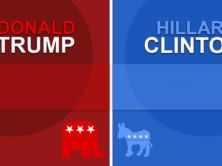(Credit: High Beam, screenshot)
This is the first in a new series from iMediaEthics called Ask iMediaEthics. iMediaEthics will feature interesting case studies in response to our readers’ requests for help or advice related to media ethics or standards. In this report, a reader asked iMediaethics for help in getting a misleading excerpt of an article removed from the internet.
Michael Yurgeles, an artist and former art teacher, asked iMediaEthics for help in finding out what his options were for getting an article about him taken off the internet. As Yurgeles explained, the article mis-represented him and was creating problems for him with his job search.
Back in the ’90s, the Boston Globe ran an article about Yurgeles leaving his job at a New Hampshire school and controversy surrounding his photo picturing two former students nude. As the article explained, Yurgeles took the photo for artistic purposes five years before resigning from his job. Yurgeles emphasized that the two former students – one male and one female – were over the age of 18 when the photo was taken and had signed a consent form.
Yurgeles told iMediaEthics he didn’t have a beef then or now with the Globe’s article or its accuracy. His problem was with online archive website High Beam’s version of the article. High Beam had republished the first few paragraphs of the Globe’s report but that excerpt left out the mitigating details of the story – including the facts that the students were legal adults who had consented to being in the photos. The article’s excerpt also didn’t say where the photograph was, so readers could have misread the article to think Yurgeles had showed the photo at the school — and not at an exhibition.
iMediaEthics verified Yurgeles’ story with his two models. They confirmed they were of age, signed releases and that the photograph was taken a year after graduation. The theme and positions of the models chosen by Yurgeles’ is a classical reference to Adam and Eve as exampled by many examples on the Internet. Compare his photo to the Albrecht Durer painting below.
Check out an example, by Albrecht Durer, below. (Credit: Wikipedia, Creative Commons)

Adam and Eve as depicted by Albrecht Durer. Yurgeles selected this classic theme for his photo. (Credit: Wikipedia, Creative Commons)
iMediaEthics has frequently written about unpublishing standards and how many news outlets will not unpublish — or delete — articles or photographs, even when people complain about coverage. But, this issue is different because it’s not the article that presented problems for Yurgeles, but a misleading excerpt.
iMediaEthics started our investigation by contacting High Beam to learn more about its policies and practices concerning complaints over its site’s content.
Robyn Docherty, Vice President, Operations of Cengage Learning’s Web Research Products Group, said High Beam would take the excerpt in question down and explained that High Beam “generally” is “very lenient” with requests from private people.
What went wrong at Highbeam for Yurgeles
High Beam, which she described as “an online archive which gives subscribers access to credible content from more than 6,500 publishers,” picks up an “automated” portion of articles, “always starting at the beginning of the article.” How much of the article is picked up depends on the publisher.
“In general, we publish the first 600 characters of an article (including spaces) with a maximum of 50%. In this case the full article was only 650 characters long so only 325 were re-published,” Docherty wrote.
Docherty said the article excerpt would immediately be unpublished “and will no longer be discoverable on highbeam.com” but warned that “a cached version may still be discoverable through Google for up to 6 weeks.”
According to Docherty, High Beam receives “about 15 requests per week” for material to be taken down.”
“Most of them are from people who are cleaning up their online profiles. They may have been reported in various papers for burglaries, DUIs or some other minor offense. Sometimes they only share a name with the offender. We generally take a very lenient view. If Martha Stewart contacted us to take down articles about her arrest we wouldn’t do it, as these have some public use.”
Docherty went on:
“The remainder are usually privacy concerns, for example I remember once being asked to take down a photo of a soldier with his mother that had been in a newspaper. It was taken as he was shipping out, and he was worried she might be targeted when he was overseas.
“We seldom get any requests as a result of the actual premise of an article. “
When asked about what other conditions are necessary for High Beam to take an article down, Docherty explained that High Beam
“With 80 million articles, no single article is especially important to us and we always take it down as soon as we are asked. We find that the people who want the articles taken down are often very hurt by their inclusion on the site. Even though we have the rights to show the articles in question, it makes no business sense for us to get into arguments with people about them.”
UPDATE: 2/25/2013 10:05 AM EST: Added info in the caption







Comments Terms and Conditions